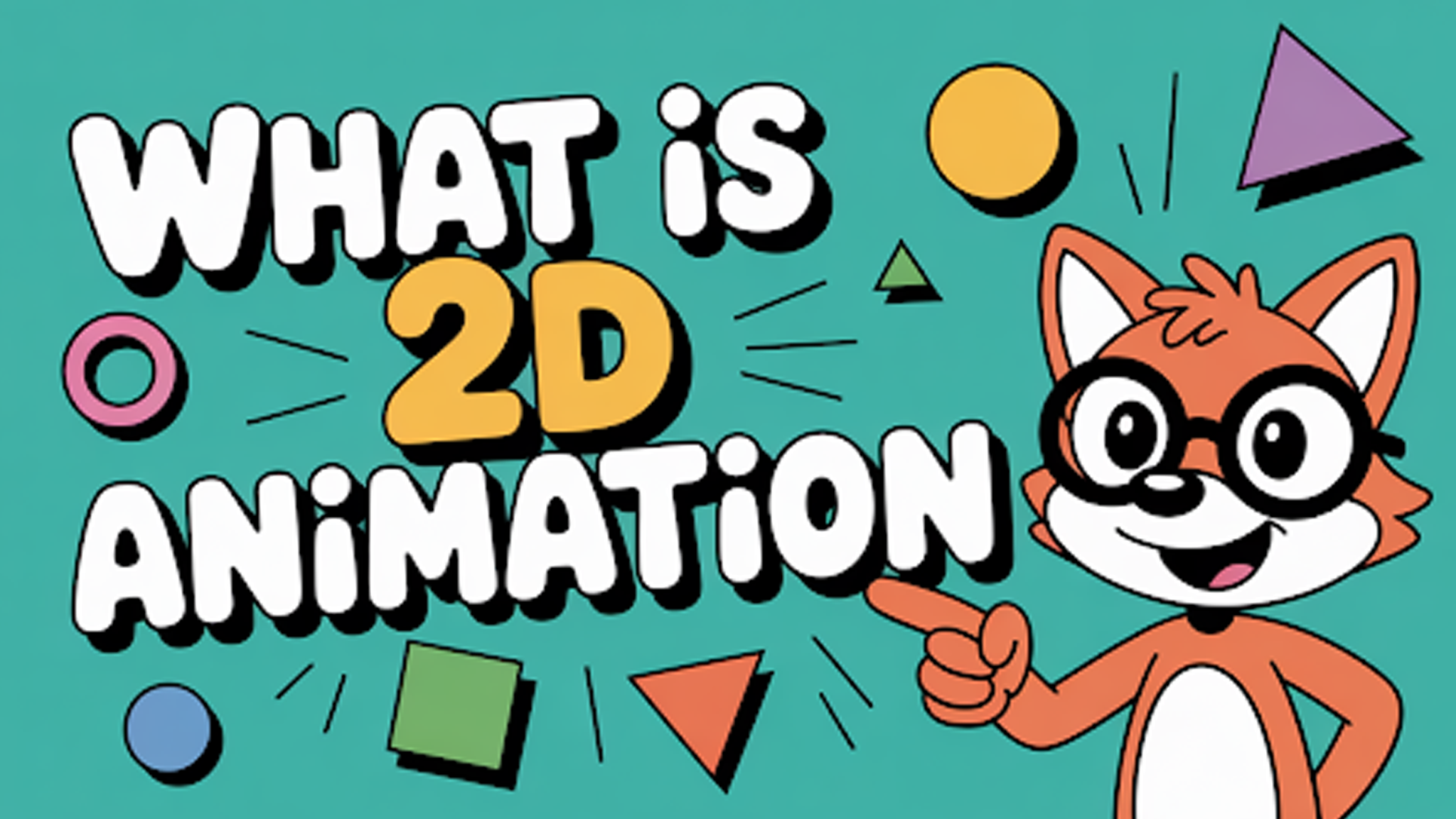Motion can explain complex ideas fast. With simple shapes, clear staging, and precise timing, two-dimensional animation turns abstract concepts into memorable stories across web, product, and learning content.
This guide answers core questions, outlines workflows, compares mediums, and shows how to evaluate partners so your next project communicates clearly and delivers on schedule.
What Is 2D Animation?
Two-dimensional animation creates motion on a flat plane using drawings, shapes, and text arranged over time. Artists define key poses, set spacing and timing, then refine arcs and transitions so action reads clearly. The result communicates ideas quickly, even on small screens, without heavy technical overhead or photoreal complexity.
How 2D Animation Works?
At its core, 2D animation is a rhythm of planning, posing, spacing, and polishing. Key poses establish intent, breakdowns shape arcs, and in-betweens control texture. Secondary motion adds life, while holds preserve clarity. Software assists, yet the animator’s eye decides silhouette, emphasis, and timing that carries meaning.
Most people don’t know the history of animation or what is cel animation? Well, cel animation is the old form of 2D animation which describes painting characters on transparent sheets, photographed over backgrounds frame by frame. Today, digital layers mirror that classic workflow with non-destructive control.
Is The Trend of Traditional 2D Animation Dying?
No. The format thrives where clarity beats spectacle: product explainers, social snippets, learning modules, interface motion, and brand films. Teams value short feedback loops, simple pipelines, and flexible assets. When goals prioritize legibility and speed, two-dimensional approaches consistently outperform more complex alternatives for budget and timeline.
2D also wins on stylistic range. It shifts from playful illustration to restrained minimalism without losing legibility. Limited palettes, crisp lines, and controlled pacing reduce cognitive load. Audiences grasp sequences quickly, even muted. As platforms lean toward short, high-signal content, the medium aligns with how people actually watch.
Use Cases of 2D Animation
Product storytelling turns abstractions into concrete steps: setup, transformation, and outcome. Clean staging, purposeful transitions, and logical hierarchy move viewers through features and benefits without distraction or fatigue.
Teams can scale impact by planning libraries, not one-offs. Treat assets as reusable infrastructure and map scope to the uses of 2D animation across awareness, activation, engagement, and learning over time.
What are the Types of 2D Animation?
There are multiple types of 2D animation which are necessary to understand at first:
- Frame-by-frame (hand-drawn): Organic timing and expressive linework.
- Cut-out / rigged: Reusable character rigs with bones, constraints, and swaps.
- Vector shape/motion graphics: Scalable icons, diagrams, UI elements.
- Stop-motion cut-outs: Paper or card moved under the camera for tactile looks.
- Rotoscoping: Traced live action for realistic motion with stylization.
- Hybrid 2D/3D (2.5D): Flat characters inside dimensional sets or with 3D props.
Step-by-Step 2D Animation Creation Process
These stages turn intent into finished motion with minimal churn. Align early, because changes are cheapest before timing locks and most expensive after animation begins. When timelines or capacity are tight, end-to-end animated video services can own strategy, craft, and delivery, preserving intent from brief to final render.
- Discovery and script: audience, promise, tone, channels, success metrics; write visually.
- Style frames and boards: palette, typography, character intent; translate script to shots; build an animatic.
- Asset build and layout: rigs, layered UI, modular backgrounds, naming conventions.
- Animation and comp: keys, breakdowns, in-betweens, effects, sound, captions.
- Delivery and handoff: ratios, codecs, layered files, licenses, and readme notes.
Is 3D Animation Easier Than 2D?
It depends on goals, assets, and timelines. Realistic products and complex cameras often favor 3D animation pipelines. Stylized storytelling, iconography, and UI motion often favor two-dimensional approaches for speed and clarity.
A practical lens on 2D vs 3D animation balances realism needs, reusability, and runtime. Choose the medium that best supports outcomes, constraints, and the experience you want viewers to have.
Best 2D Animation Examples
These samples show formats that consistently perform. Pick references by goal, channel, and runtime, then note pacing and readability during review.
- SaaS explainer: UI callouts, iconography, and clean transitions clarify a feature in 60–90 seconds for landing pages and demos.
- Fintech teaser: Bold type, glyphs, and rhythmic cuts deliver a single promise in under 15 seconds for paid social.
- Micro-lesson: Stepwise diagrams teach one concept in 30–60 seconds for LMS modules or internal training.
- Game cutscene: Character acting and parallax backgrounds add narrative between levels without heavy 3D pipelines.
- Social loop: Five-second product highlight uses seamless easing to hold attention on reels and stories.
- Title sequence: Hand-drawn frames introduce tone and theme for events, webinars, or episodic content.
- Animated infographic: Numbers, charts, and labels unfold in a logical sequence for reports and keynotes.
- App onboarding: Simple, loopable motions demonstrate actions and confirm success states inside product flows.
- Documentary insert: Minimal shapes and text animate timelines or processes to support voiceover.
How to Choose the Right 2D Animation Partner
Start with outcomes. Ask candidates how they turn goals into structure before keyframes. Strong partners prototype thinking through scripts, style frames, and an animatic. This reveals collaboration rhythm and schedule realism. Teams that plan well ship predictably and protect creative energy for performance, not rework.
For procurement clarity, choosing the right 2D Animation Service hinges on three checks: evidence-based process, demonstrable timing control, and clean handoffs. Review animatics for eye-trace and pacing. Confirm delivery standards. If those boxes check, budget and schedule usually follow, and updates remain straightforward after launch.
AnimatedVideos.co maps outcomes to a concrete production blueprint, proves timing control with frame-accurate animatics, and delivers spotless, developer-ready handoffs. You get predictable delivery, fewer revisions, and room to push performance where it matters.
FAQs
How long does a 60–90 second explainer take?
Four to eight weeks is typical, depending on complexity and reviews. Lock script and animatic early to keep schedules predictable and avoid late structural changes.
What delivery files should I request?
Ask for masters per ratio, layered project files, linked assets, captions, font licenses, and a readme with export recipes and color notes for future updates.
Which software is commonly used for 2D animation?
Studios mix tools: Toon Boom Harmony or TVPaint for drawing, Adobe After Effects for compositing, and vector apps for interface-focused 2D animation.
How much does 2D animation cost, and what affects price?
Costs scale with runtime, scene complexity, character count, and revision rounds. Custom illustration and frame-by-frame 2D animation increase labor.
How should I review 2D animation drafts to avoid rework?
Lock script, then boards, then animatic. Give early notes on meaning and pacing so final 2D animation passes focus on performance.
Can 2D animation be localized without starting over?
Yes. Keep text editable, reserve safe areas, and design captions up front. This lets 2D animation scale across languages quickly.
What deliverables should I expect from a 2D animation handoff?
Layered project files, linked assets, captions, font licenses, export presets per ratio, and a readme so future 2D animation updates are painless.
How do I keep 2D animation consistent across campaigns?
Create a motion style guide for easing, durations, and text timing, plus libraries of icons and rigs. If you’d like this codified and maintained, AnimatedVideos.co turns your look into a living motion kit documented, versioned, and ready for any team to use without drift.
What’s the fastest way to test a 2D animation partner?
Run a small discovery sprint script slice, style frames, and a short animatic. For a low-risk trial, AnimatedVideos.co offers compact pilot sprints, frame-accurate animatics, annotated decisions, and developer-ready handoffs so you can judge fit on real work, not promises.
Start Your 2D Animation Project Today
Tell us your goals, audience, and timeline. AnimatedVideos.co will turn them into a clear plan script, style frames, animatic, and a predictable schedule with organized handoffs for future updates. Book a quick discovery call to get a tailored proposal and kick off production with a team focused on clarity, speed, and measurable outcomes.



